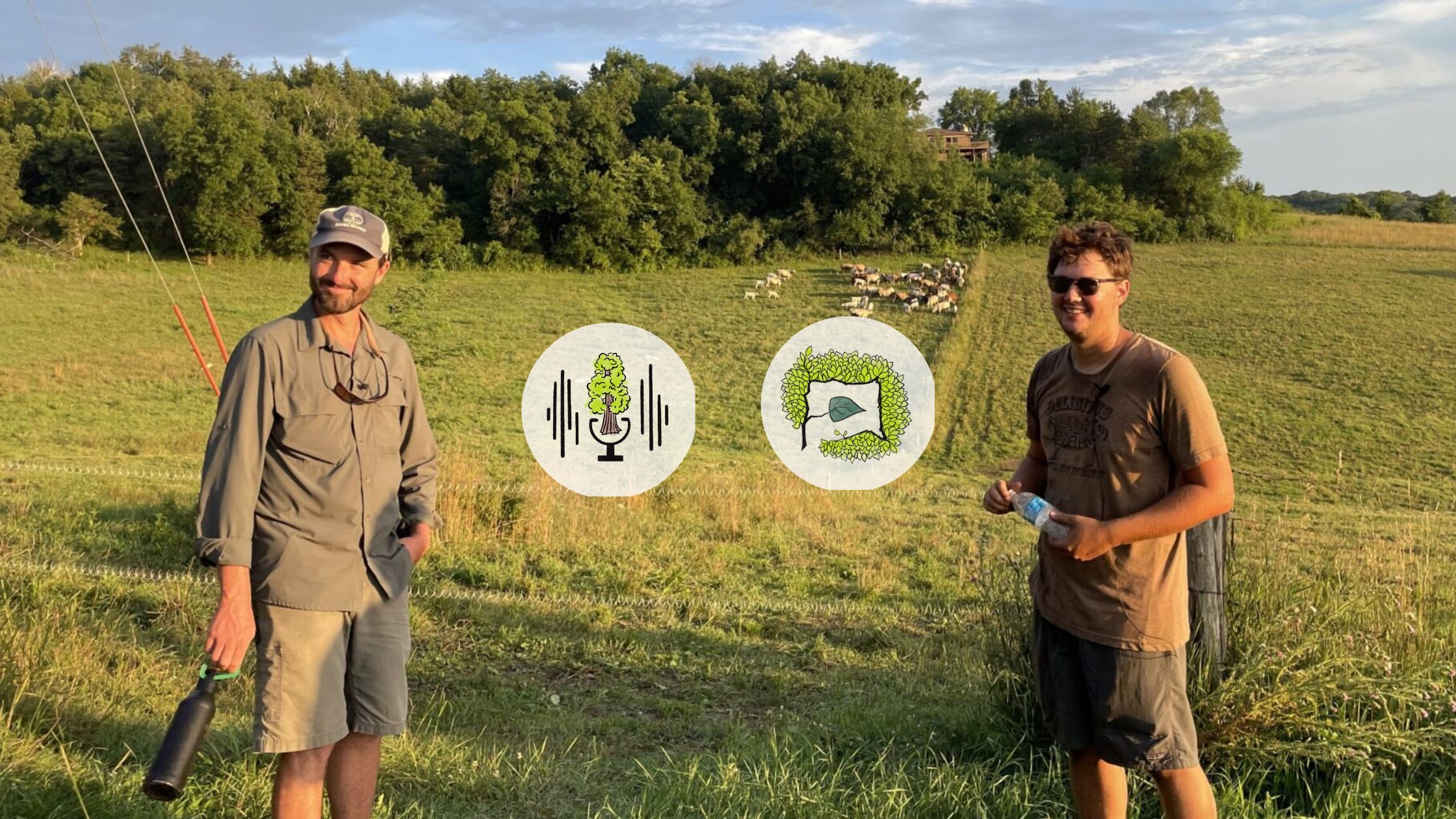Our latest podcast episode is a podcast pasture walk!
For anyone who’s not familiar with social events that involve pastures, a pasture walk is kind of like an on-farm show-and-tell. These events are a chance for people to see for themselves how a farm is being managed, and what is (and isn’t) working.
On a balmy evening this past July, the Savanna Institute hosted a pasture walk on its Spring Green Campus near the town of Spring Green, Wisconsin. About 30 attendees gathered to talk about silvopasture, or the integration of livestock, pasture forages, and trees. Erik Hagan, Spring Green Campus Director, kicked off the pasture walk, and was soon joined by Michael Dolan,who currently rents the pasture space and works with the Savanna Institute to graze his cattle there. Michael was busy wrapping up some things at his own farm, Seven Seeds Farm, which is nearby and also uses silvopasture practices.
Michael and Erik took turns describing the silvopasture management happening on the farm and answering questions from attendees.
Transcript has been edited for brevity and clarity.
Michael: So this is our first example of silvopasture by subtraction. The previous landowner cleared this hillside and used it as a cattle wintering area. And that did two things: kept down the brush, knocked down the brush, and also after that, he was able to establish a bunch of grasses on these hillsides. You want to open the canopy to like 30 to 60%, somewhere in that range, to get sunlight onto the ground and get grasses to grow and hopefully not brush.
Attendee: Did he have to mow this for like five years?
Michael: No, he just used cattle. But I think he did a lot of hand trimming too. This was his first project and then the other side was his later project. I actually ended up doing the seeding there. Erik provided me all the seed and then I seeded it, and then we trampled it all with the cattle and now it’s all beautiful clover and looking really nice.
This paddock is very low productivity because it’s sandy and really steep. I mean, this is a 2 to 3 grazing per year paddock. But with that said, when it’s hot, I will give them access to this because it has the silvopasture and they can get the shade and they can spread out as opposed to if I put them in the barn, they’re all clumped up. They don’t have the breeze like we’re feeling right here. The breeze helps keep the flies off of them. The benefits of silvopasture are endless.
Erik: One thing that I really like, that I’ve learned and respect about Michael, is that it’s all about management. You can carry a cool season grass pasture through a drought if you manage properly – no making mistakes though! But there’s just a pretty tremendous amount of producers out there that do a fantastic job and learning from them is pretty exciting, I think.
Michael: I mean, my saying is farming is 99% timing and 1% luck. Timing is very important in every aspect of farming: when you graze, when you plant, when you harvest – it all comes down to timing.
You can see footage from Michael’s farm, Seven Seeds Farm, as well as other Midwestern agroforestry operations, in this mini-documentary by Windborne Media:

